Nestled between the emerald waves of the Bay of Bengal and the rolling hills of the Eastern Ghats, Vizag — or Visakhapatnam — is a coastal gem that effortlessly blends natural beauty, urban elegance, and cultural charm. Often called the "Jewel of the East Coast," this city offers a breathtaking skyline painted with golden beaches, ancient temples, and vibrant cityscapes. Whether you're strolling along the serene RK Beach or watching ships glide into one of India's oldest ports, Vizag welcomes you with a warm sea breeze and a sense of calm that’s hard to put into words.
The city is a symphony of contrasts — where the roar of waves meets the rustle of forest leaves, and bustling marketplaces coexist with peaceful hilltops. Araku Valley, just a scenic drive away, unfolds like a dream of misty coffee plantations and tribal heritage, while the city itself pulses with modern life, dotted with stylish cafés, museums, and a growing tech scene. But Vizag never lets go of its soul; the timeless charm of its Buddhist heritage and colonial past lingers in quiet corners and age-old ruins.
What truly sets Vizag apart is its rhythm — unhurried, yet full of life. It’s a place where sunrises steal the spotlight and every sunset feels like a soft goodbye whispered over the ocean. Whether you’re a seeker of peace, a lover of landscapes, or an adventurer chasing new horizons, Vizag holds a little magic for everyone.
Best time to visit: October to March
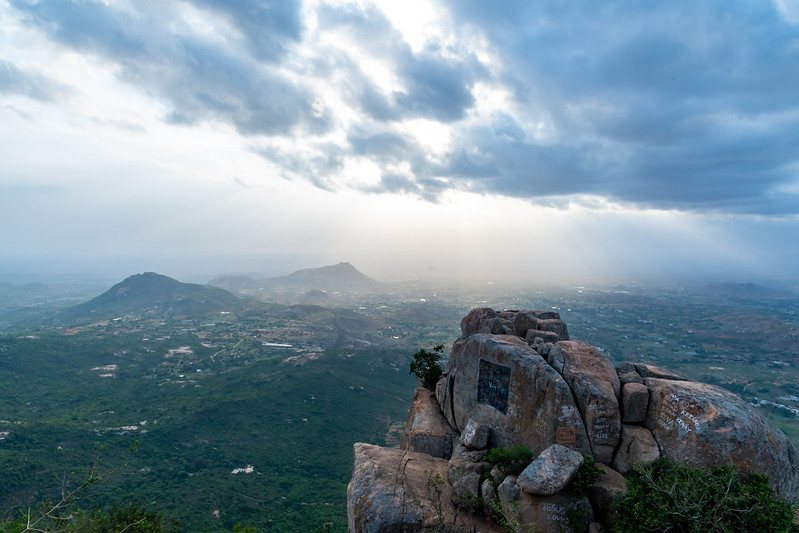
Tucked away in the Chittoor district of Andhra Pradesh, Horsley Hills is a quiet whisper of nature that feels like a well-kept secret. Perched at an altitude of over 4,000 feet, this charming hill station is often described as Andhra’s answer to Ooty — minus the crowds and chaos. The air here is crisp, the roads are laced with eucalyptus and gulmohar trees, and the panoramic views stretch endlessly, blurring the line between sky and forest. It’s a place where the clouds feel close enough to touch, and time slows down just enough for you to breathe it all in.
Horsley Hills isn’t just about scenic beauty; it carries an old-world charm wrapped in a quiet mystique. From the age-old Horsley Bungalow that still stands with colonial grace, to the ancient trees like Kalyani — a 150-year-old eucalyptus marvel — the hills are filled with stories. You’ll find winding paths that lead to viewpoints like the Gali Bandalu (Wind Rocks), where the breeze sings through the hills and makes you feel weightless. Birdsong becomes your morning alarm, and the scent of pine and earth follows you everywhere.
The joy of Horsley Hills lies in its simplicity. There are no flashing lights or crowded attractions — just peaceful walks, crisp mountain air, and the kind of silence that heals. Whether you're sipping hot chai with a view or waking up to mist-covered valleys, the hills wrap around you like a soft blanket, offering rest, reflection, and renewal.
Best time to visit: November to February
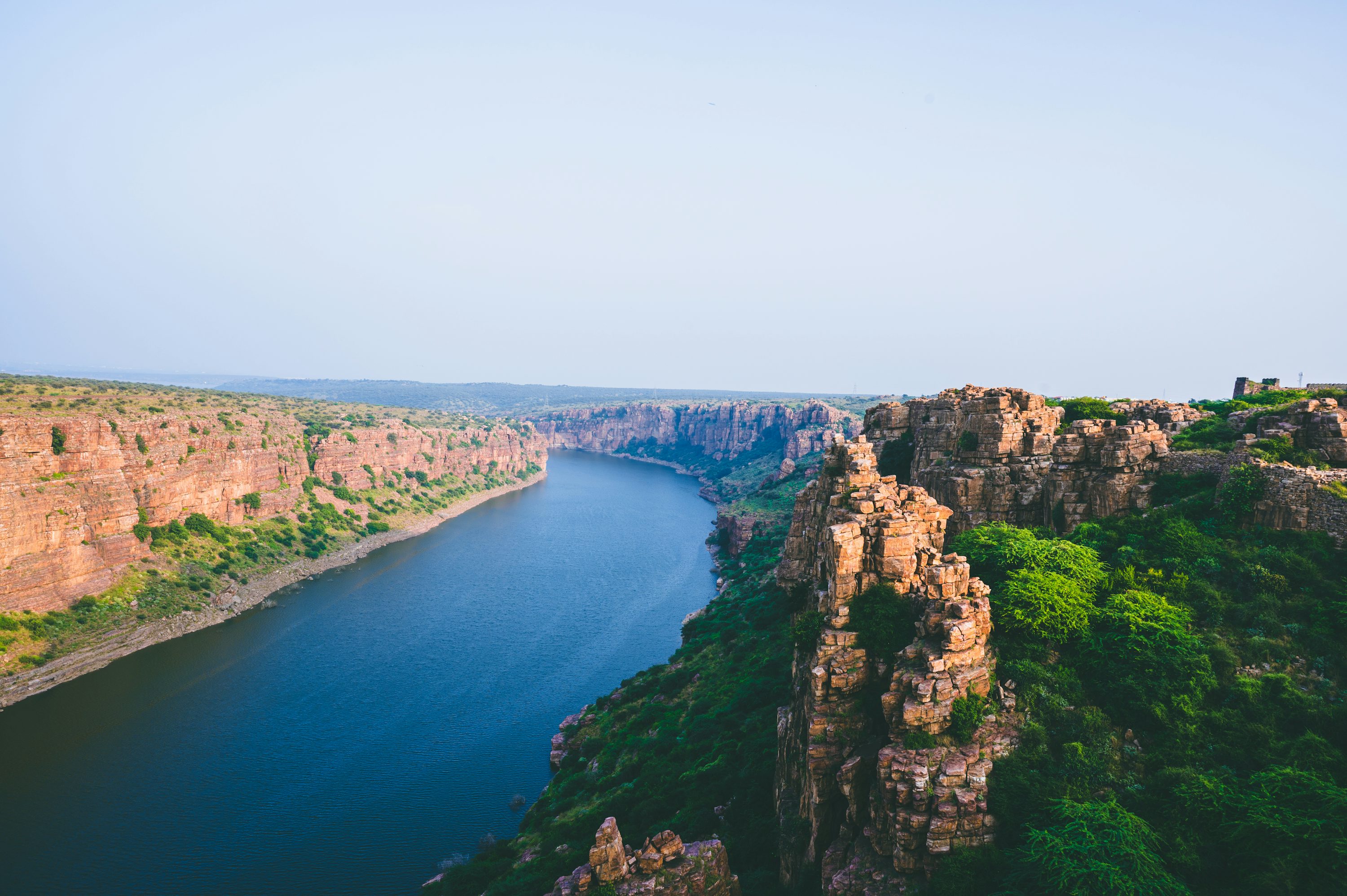
Carved by the mighty Pennar River and standing proudly amidst the rugged terrain of Andhra Pradesh, Gandikota is often called the "Grand Canyon of India" — and not without reason. Towering red sandstone cliffs stretch dramatically along the gorge, revealing a breathtaking view that feels both ancient and timeless. As sunlight dances across the rocky crevices and the river shimmers far below, Gandikota casts a spell that stirs the imagination. This isn’t just a destination; it’s a painter’s canvas, a poet’s dream, and a wanderer’s delight.
At the heart of this windswept fortress town lies the Gandikota Fort, a sprawling citadel of stone and history. Within its ancient walls, you'll discover echoes of dynasties long gone — from the majestic Madhavaraya Temple to the delicate arches of the Jamia Masjid, the architecture reflects a unique blend of Hindu and Islamic influences. Walk through its ruins, and you’ll feel the presence of time — as if the stones themselves remember the tales of kings, warriors, and the quiet strength of those who once lived here.
But Gandikota is more than a relic of the past. It’s a place where the wild beauty of nature meets the raw elegance of forgotten history. Camp under starlit skies near the canyon's edge, feel the chill of the wind sweeping through the cliffs, or simply sit in silence as the sun sets behind the horizon in a blaze of orange and gold. Here, adventure and peace coexist — a rare harmony few places can offer.
Best time to visit: October to March
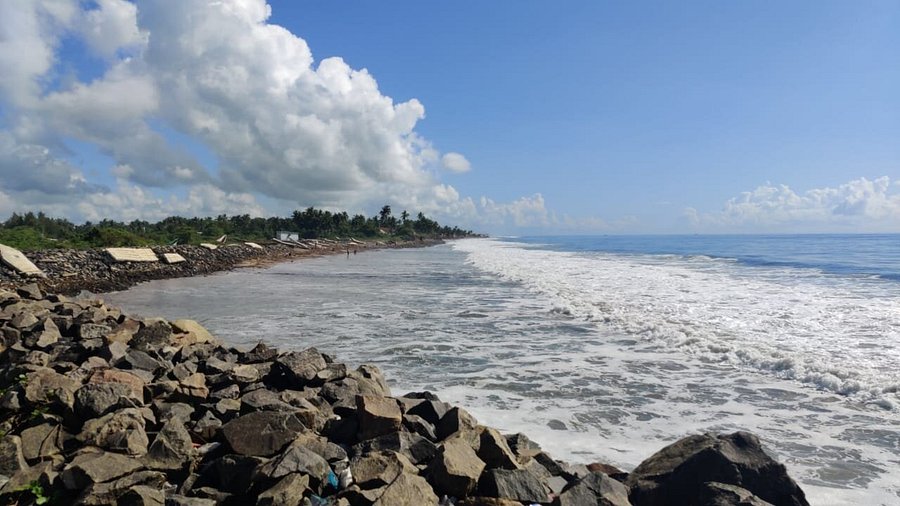
Cradled along the eastern coastline of Andhra Pradesh, Kakinada is a city where the sea hums lullabies and the breeze carries the scent of coconuts and brine. Known for its laid-back charm and rich coastal heritage, Kakinada strikes a beautiful balance between tradition and progress. Its wide, clean roads lead you to serene beaches, bustling harbors, and temples that whisper tales of centuries past. But at its heart, Kakinada is a city that moves at its own gentle rhythm — never too fast, never too loud.
What sets Kakinada apart is its soulful connection to the sea. Whether you’re walking along the calm sands of Uppada Beach, watching fishermen cast their nets, or taking a boat ride to the mystical Hope Island, there's an effortless grace to life here. The city’s culinary treasures, especially the iconic Kakinada Kaja and spicy coastal curries, are a celebration of its deep-rooted culture. Every bite and every breeze here tells a story — of salt, spice, and a legacy that refuses to fade.
Beyond its picturesque coast, Kakinada has quietly emerged as an industrial and educational hub, home to a thriving port and vibrant IT corridor. Yet, in the midst of this development, it has preserved its soul. Temples like Bhimeswara Swamy Temple in nearby Draksharamam add a spiritual aura to the region, reminding visitors of the deep faith that flows beneath the surface of this coastal city.
Best time to visit: November to February
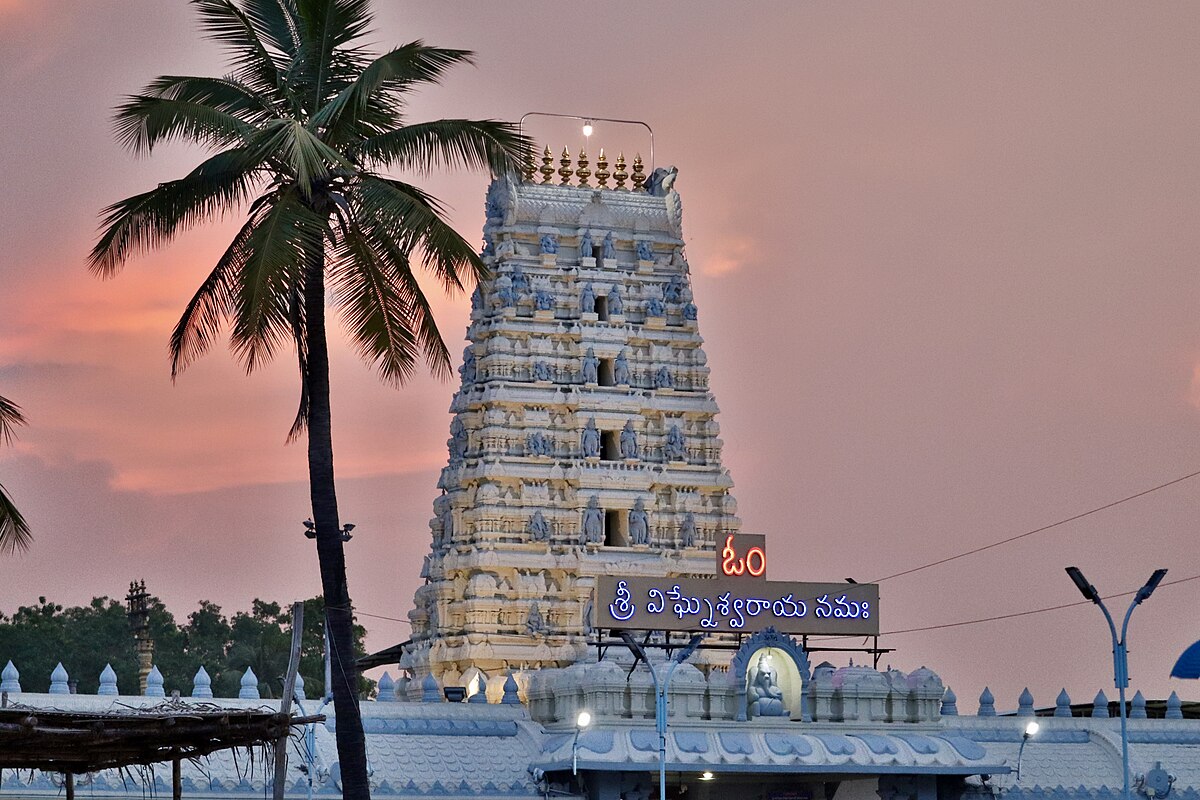
Set against a backdrop of rolling hills, ancient temples, and rich cultural lore, Chittoor is a district that quietly weaves the soul of Andhra Pradesh into every corner of its landscape. Known as the gateway to the southern state, Chittoor is far more than just a stop on the way to Tirupati. It’s a place where history lingers in the air, where nature and devotion meet under a sky brushed with timelessness. From the lush mango orchards that dot the countryside to its revered spiritual sites, Chittoor is a mosaic of tradition, serenity, and hidden wonders.
The region carries a sacred pulse — anchored by ancient shrines like Kanipakam Vinayaka Temple, nestled in a village that seems untouched by time, and Mogili Temple, where legends are etched into every stone. These are places not just for prayer, but for pause — where silence speaks louder than words, and faith takes on a beautifully humble form. Every path you walk in Chittoor feels like a journey through pages of myth and memory.
Nature has also been generous here. The cascading waters of Kailasakona Falls, the wildlife-rich forests of Koundinya Sanctuary, and the cool, cloud-kissed charm of Horsley Hills make Chittoor a haven for nature lovers and weekend wanderers alike. It’s where the land breathes calmly, and the bustle of the world fades into birdsong, waterfalls, and temple bells.
In every corner of Chittoor, there’s a quiet story — in rustling leaves, temple chants, and the warmth of its people. Rooted in Telugu traditions, the town invites you to feel its charm, wrapping you in the beauty of simplicity.
Best time to visit: October to February
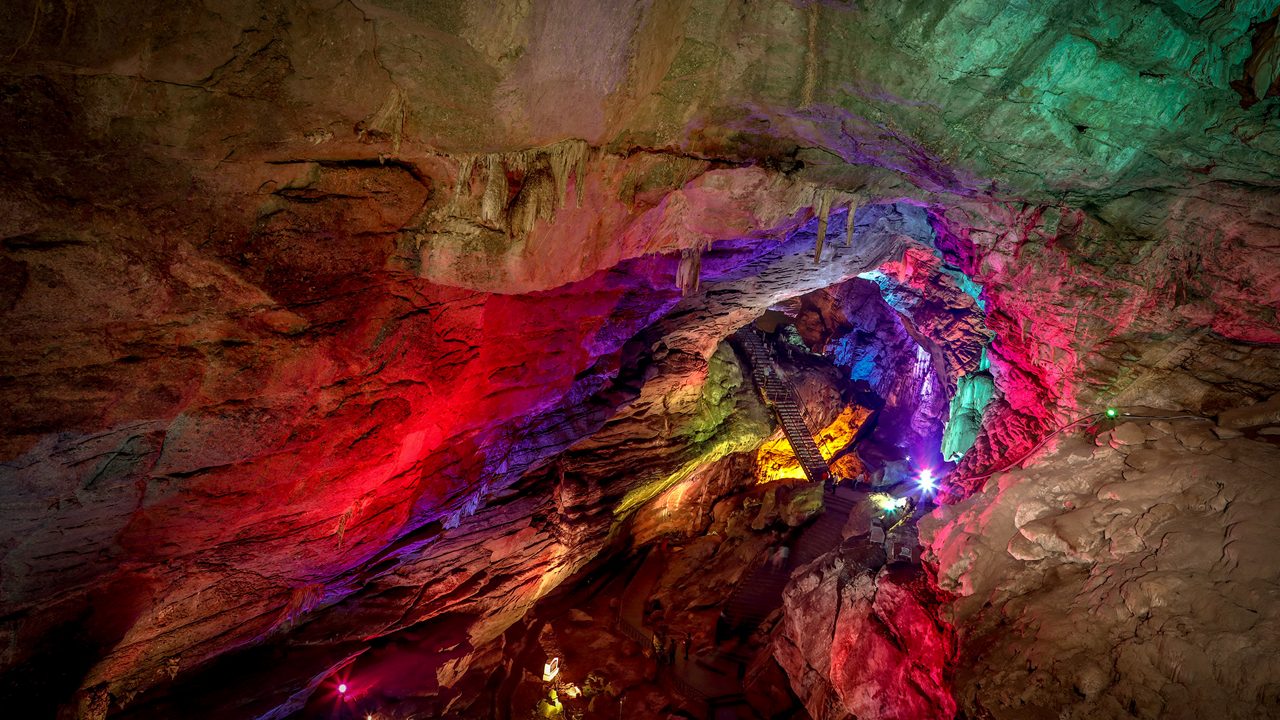
Hidden deep within the Ananthagiri Hills of the Eastern Ghats, Borra Caves are a breathtaking marvel of nature and geology. Formed over millions of years, these limestone caves are a mysterious underworld of stalactites and stalagmites, illuminated by soft lights that make the formations seem almost alive. As you step inside, you're greeted by a cool, damp air and a silence that hums with ancient whispers — a natural cathedral carved by time and water.
Every corner of the cave tells a story, from the Shiva Lingam-shaped rock that draws pilgrims to the heart of the chamber, to the surreal formations that resemble animals, deities, and mythical creatures. There's something magical about how light dances on the damp surfaces, revealing layers of mineral-rich history in hues of gold, silver, and deep brown. The cave stretches over 300 feet into the earth, and walking through its echoing halls feels like entering a forgotten world.
Surrounded by dense forests and tribal villages, the journey to Borra Caves is just as enchanting as the destination itself. The scenic drive, often lined with mist and waterfalls, adds to the sense of discovery. It's not just a place for geologists or nature lovers — it's for anyone who wants to be awed by the sheer artistry of nature.
Best time to visit: October to February
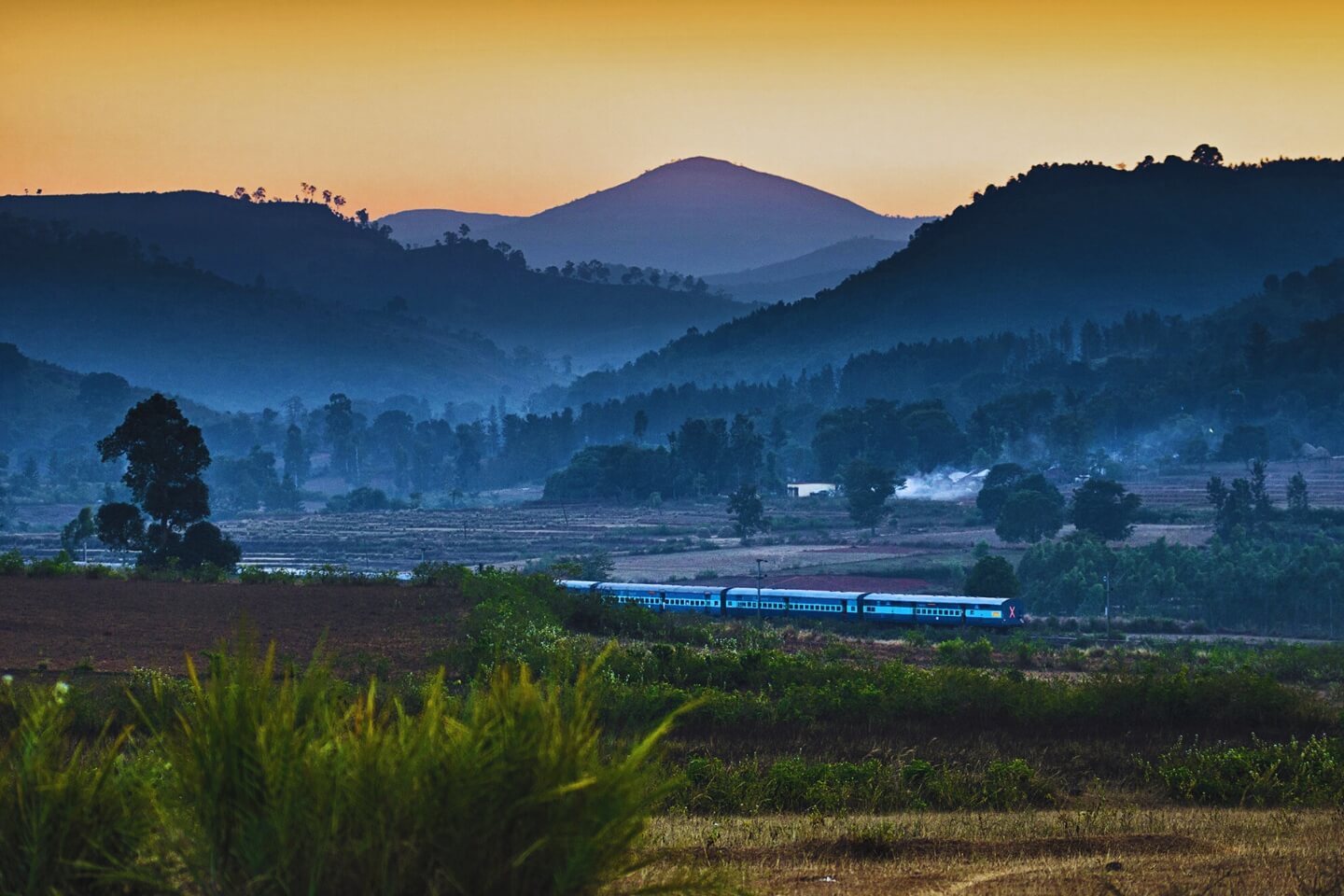
Tucked away in the misty hills of the Eastern Ghats, Lambasinghi is a quaint little village that feels like it belongs in a dream. Often called the “Kashmir of Andhra Pradesh,” this hidden gem is one of the few places in South India where temperatures drop close to zero during winter, occasionally even frosting the ground. Wrapped in clouds and covered in a blanket of cool breeze, Lambasinghi is where nature slows down, and every breath feels fresh, cold, and pure.
Surrounded by dense forests, pepper and coffee plantations, and whispering waterfalls, the village offers an experience that is raw and unspoiled. Mornings begin with mist rolling over hills, and the chirping of exotic birds echoing through the trees. It’s not a place of grand monuments or flashy lights — instead, it’s a retreat for the soul, where peace reigns and simplicity soothes every corner of your heart.
The charm of Lambasinghi lies in its stillness and the feeling of being worlds away from the rush of city life. Whether you’re cozying up by a fire, sipping locally brewed coffee, or exploring nearby viewpoints like Thajangi Reservoir or Kothapalli Waterfalls, every moment here feels like poetry in motion. It’s a destination that doesn’t demand anything from you — it simply invites you to be present.
Nestled in the Eastern Ghats, Lambasinghi is a serene hill village often called the “Kashmir of Andhra Pradesh” for its chilly weather and misty landscapes. Surrounded by forests, plantations, and waterfalls, it offers a peaceful escape far from the city’s noise.
Best time to visit: November and January
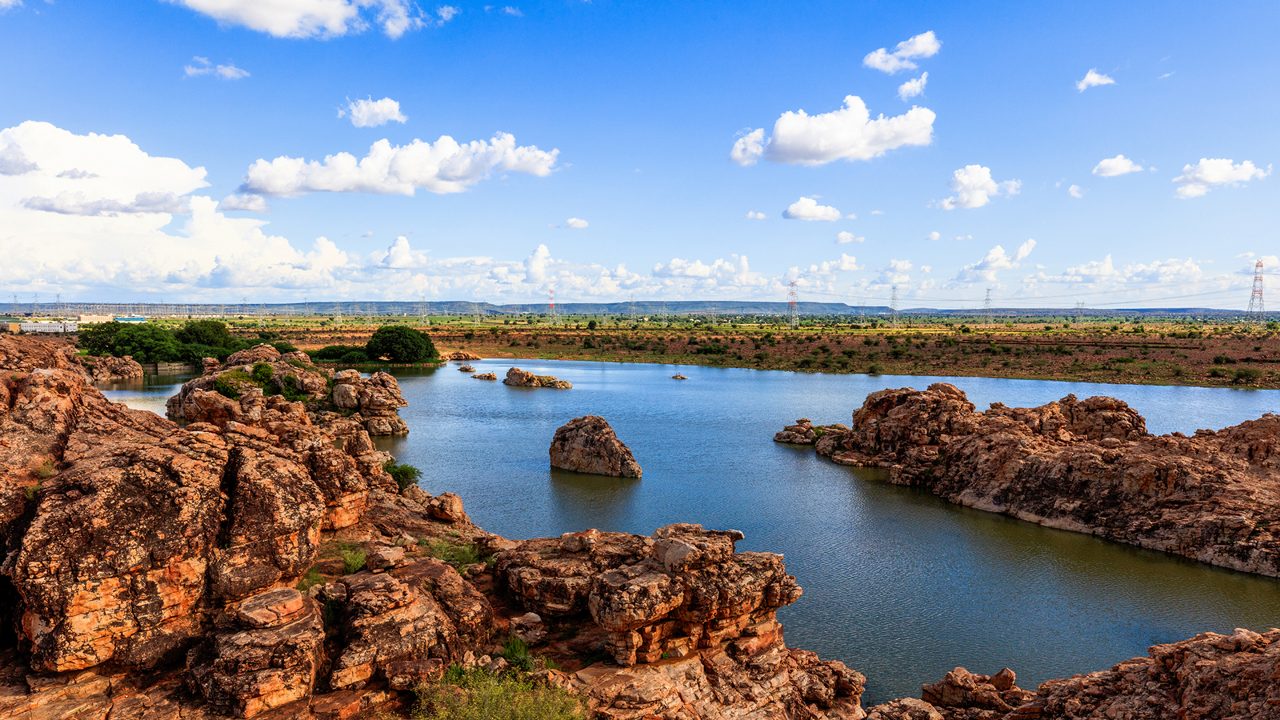
Kurnool, often referred to as the "Gateway of Rayalaseema," is a city where history and heritage flow as deeply as the Tungabhadra River that runs beside it. Once the capital of Andhra Pradesh, Kurnool is steeped in legacy — from ancient caves and medieval forts to temples that echo with centuries-old chants. The majestic Konda Reddy Fort stands tall as a symbol of resilience, while the mysterious Belum Caves, India’s second-longest cave system, take you into the heart of the earth itself.
he city is a blend of raw landscapes and rich culture — where arid plains meet historic treasures and traditions still thrive in their purest form. It’s a place where time seems layered, with every monument, market, and meandering river telling stories of empires, saints, and everyday lives. Beyond the landmarks, Kurnool’s warmth lies in its people, its food, and the earthy rhythm of life that still honors its roots.
What truly sets Kurnool apart is its ability to transport you across eras — from prehistoric cave art in Oravakallu Rock Garden to the timeless devotion at Mantralayam, the sacred abode of Saint Raghavendra. The landscape shifts from dramatic rock formations to peaceful riverbanks, offering a journey that's both spiritual and scenic. Whether you're a history enthusiast, a pilgrim, or a curious traveler, Kurnool invites you to uncover layers of untold stories, wrapped in stone, spirit, and silence.
Best time to visit: October to February
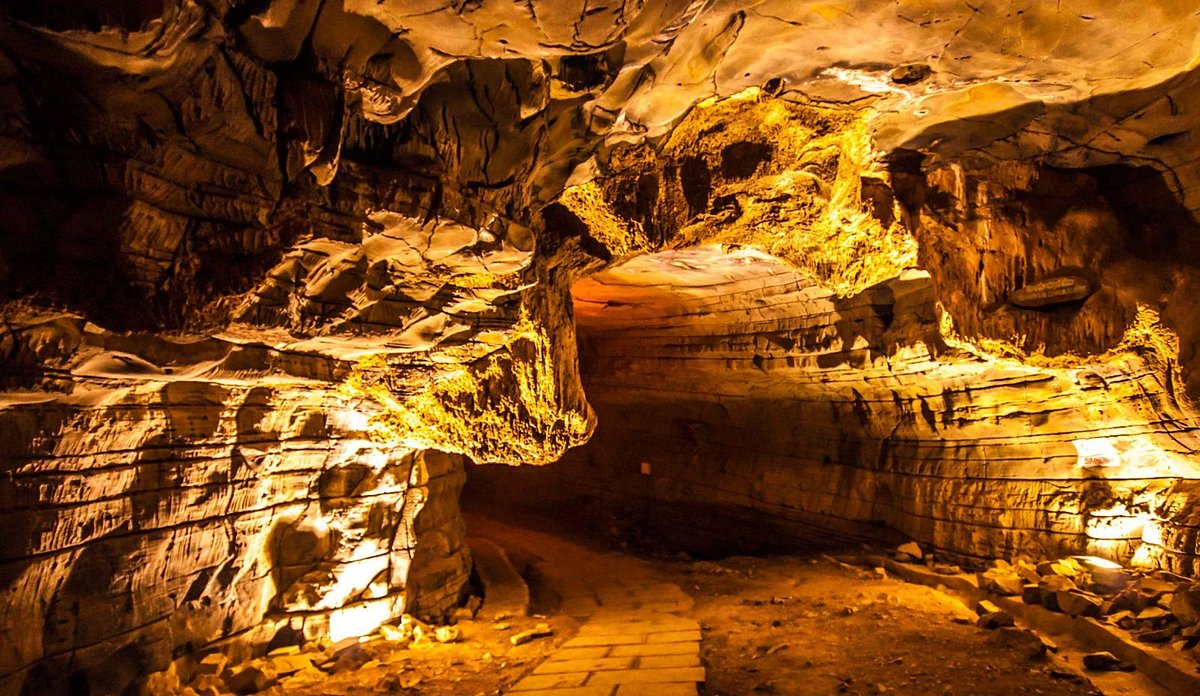
Belum Caves, nestled in the quiet heart of Andhra Pradesh, are a mesmerizing underground world carved by nature over millions of years. As the second-longest cave system in India, they stretch over 3 kilometers beneath the earth’s surface, revealing a labyrinth of winding passages, majestic chambers, and striking stalactite and stalagmite formations. The cool, echoing silence inside is both eerie and enchanting — a natural cathedral sculpted by time, water, and mystery.
Walking through Belum Caves feels like stepping into another realm. The softly lit interiors reveal marvels like the Saptasvarala Guha (musical chamber), where the rocks produce resonant tones when tapped, and the Meditation Hall, once believed to be used by Buddhist monks. The temperature inside remains comfortably cool year-round, offering a surreal contrast to the arid plains above, and every turn through its narrow corridors sparks awe and curiosity.
What makes Belum Caves truly unforgettable is the sense of discovery it inspires — each chamber feels like a secret unveiled, with nature’s artistry on full display in every ripple of limestone and echo of dripping water. Unlike typical tourist spots, the caves offer a raw, immersive experience that stirs both wonder and introspection. Whether you're an adventurer, a history lover, or simply someone in search of the extraordinary, Belum Caves invite you to go deeper — into the earth, and into awe itself.
Best time to visit: October and February
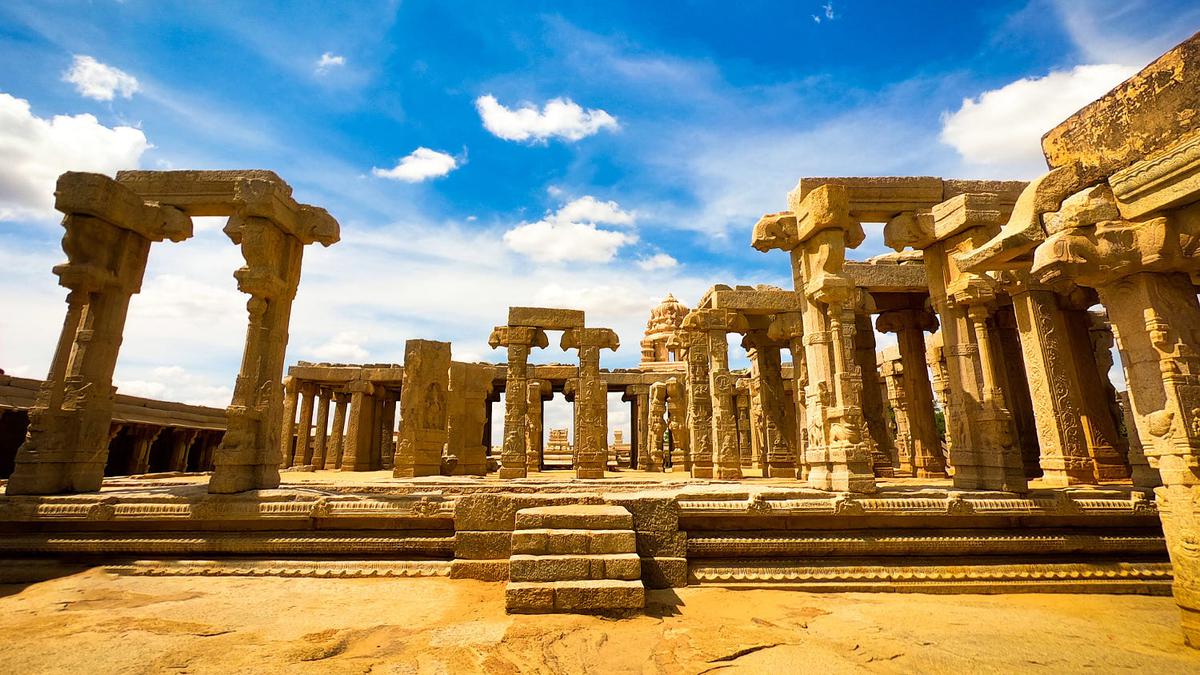
Lepakshi, a small yet magnificent village in Andhra Pradesh, is a treasure trove of ancient art, architecture, and legends. Steeped in mythology and spiritual grandeur, it is most famous for the stunning Veerabhadra Temple, a masterpiece of the Vijayanagara era. Every inch of the temple is alive with intricate carvings — from scenes of celestial beings and dancers to tales from the Ramayana and Mahabharata etched in stone. The highlight? A massive hanging pillar that mysteriously floats above the ground, defying gravity and explanation.
As you step into Lepakshi, it feels like entering a living museum where time has stood still. The sprawling granite Nandi statue — one of the largest monolithic bulls in India — sits in silent majesty, watching over the sacred site. The temple’s frescoes, still vivid after centuries, whisper stories of devotion and royal patronage, drawing you into a world where spirituality meets artistic brilliance.
But Lepakshi isn’t just about history — it's about atmosphere. The golden light bathing the temple courtyards, the sound of wind echoing through ancient corridors, and the aura of legend (like the belief that this was where Jatayu fell during his battle with Ravan) give the village a mystical charm.
Best time to visit: October and February
